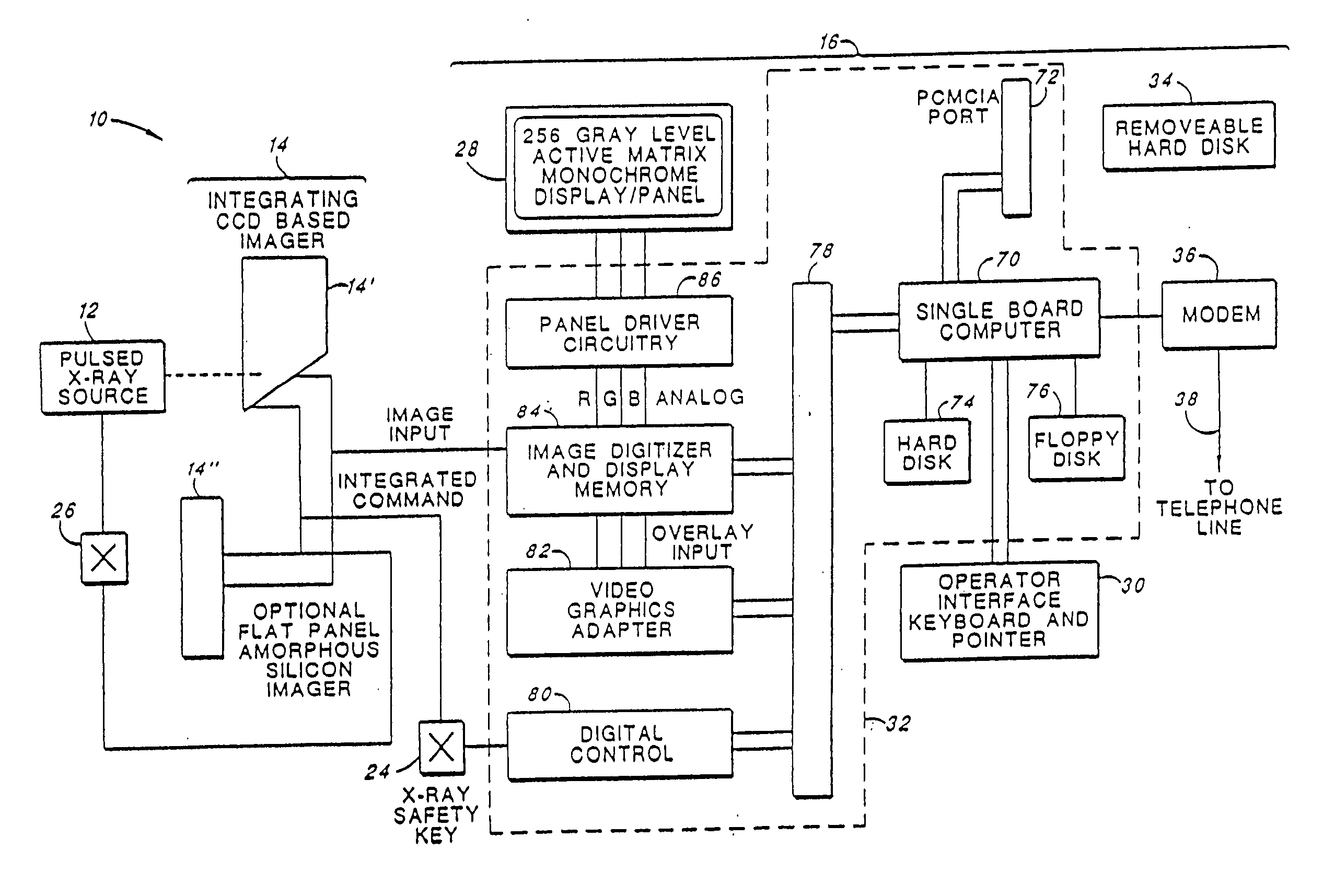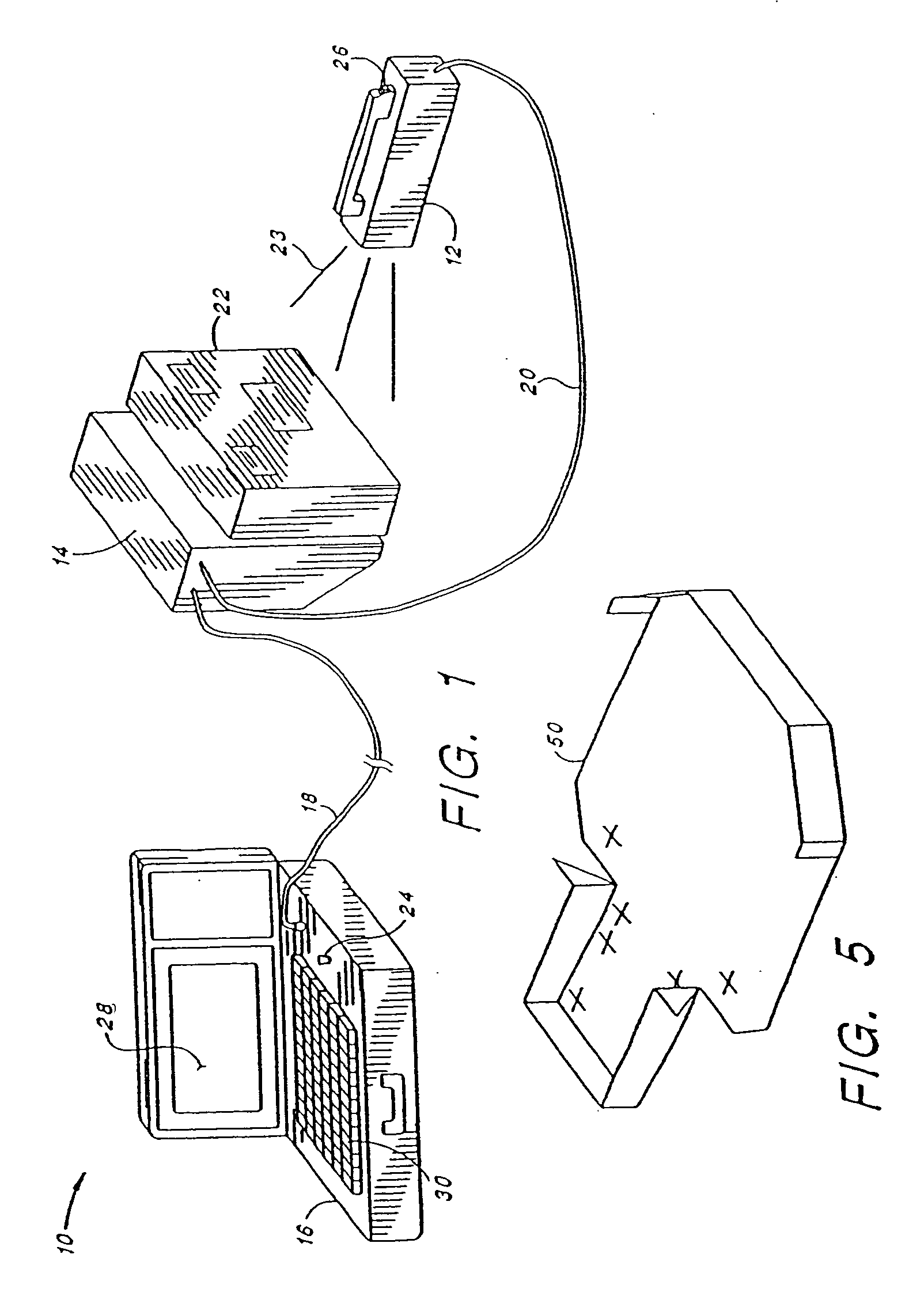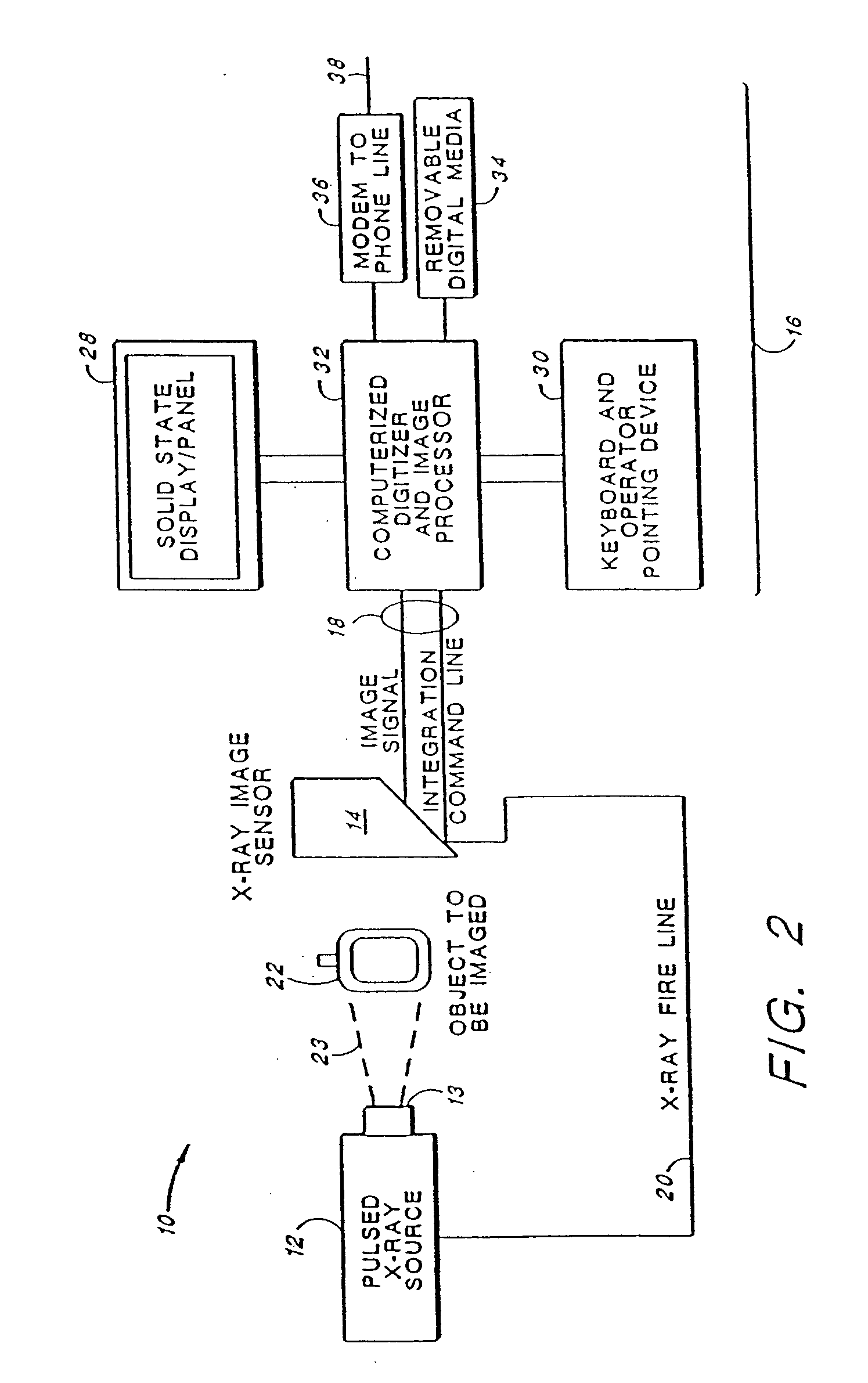Portable, digital X-ray apparatus for producing, storing, and displaying electronic radioscopic images
a digital x-ray and electronic technology, applied in the field of portable, self-contained, x-ray apparatus, can solve the problems of affecting the quality of x-ray images, and difficult to use the above approaches in the mirror-folded system, so as to improve the optical portion, reduce the effect, and increase the fraction of light emitted
- Summary
- Abstract
- Description
- Claims
- Application Information
AI Technical Summary
Benefits of technology
Problems solved by technology
Method used
Image
Examples
Embodiment Construction
[0045] The following description is of the best mode presently contemplated for carrying out the invention. This description is not to be taken in a limiting sense, but is made merely for the purpose of describing the general principles of the invention. The scope of the invention should be determined with reference to the claims.
[0046] Turning first to FIG. 1, there is shown an imaging system 10 made in accordance with the present invention. The system 10 includes three main subsystems: (1) a portable X-ray source 12, (2) an imager 14, and (3) a Display / Control Unit 16. The three subsystems are interconnected with two cables. A first cable 18 is a “long” cable and is connected between the Display / Control unit 16 and the imager 14. The long cable may be as long as 180 feet. A second cable 20 is a “short” cable that is connected between the imager 14 and the X-ray source 12. The short cable is typically less than 10 feet in length.
[0047] Advantageously, the system 10 is portable, w...
PUM
| Property | Measurement | Unit |
|---|---|---|
| mirror angle | aaaaa | aaaaa |
| length | aaaaa | aaaaa |
| thickness | aaaaa | aaaaa |
Abstract
Description
Claims
Application Information
 Login to View More
Login to View More - R&D
- Intellectual Property
- Life Sciences
- Materials
- Tech Scout
- Unparalleled Data Quality
- Higher Quality Content
- 60% Fewer Hallucinations
Browse by: Latest US Patents, China's latest patents, Technical Efficacy Thesaurus, Application Domain, Technology Topic, Popular Technical Reports.
© 2025 PatSnap. All rights reserved.Legal|Privacy policy|Modern Slavery Act Transparency Statement|Sitemap|About US| Contact US: help@patsnap.com



